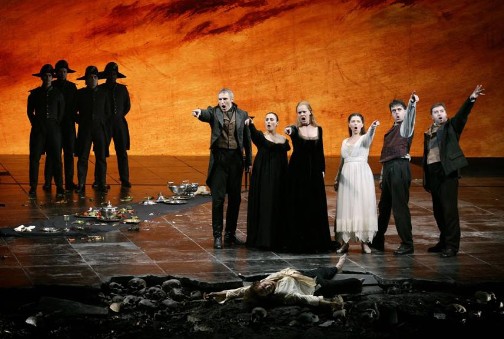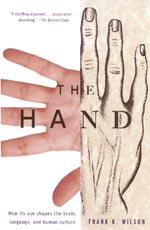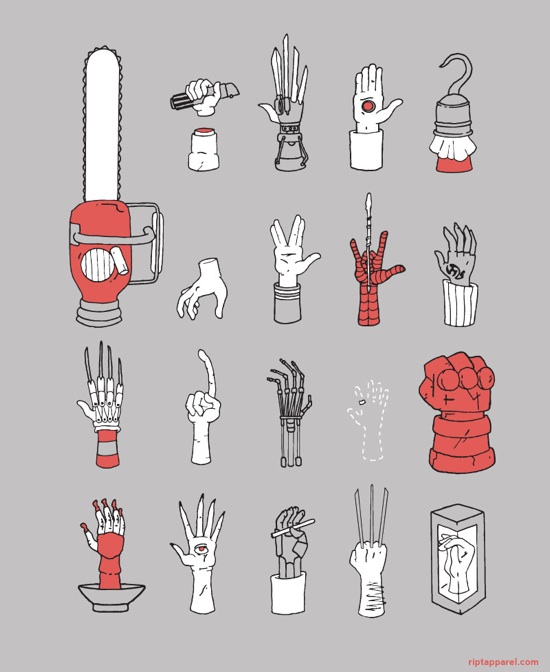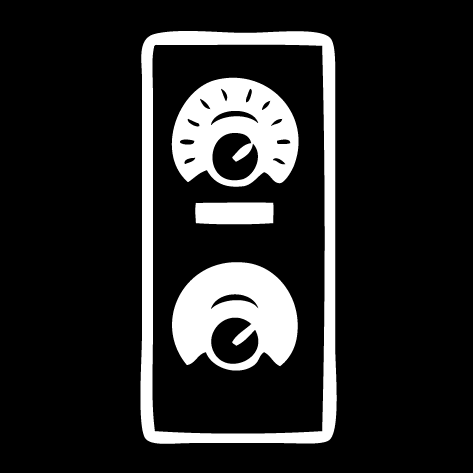cognition
Learning nouns activates separate brain region from learning verbs
On 11, Aug 2011 | No Comments | In cognition, language, neuroscience | By Dave
Another MRI study, this time investigating how we learn parts of speech:
The test consisted of working out the meaning of a new term based on the context provided in two sentences. For example, in the phrase “The girl got a jat for Christmas” and “The best man was so nervous he forgot the jat,” the noun jat means “ring.” Similarly, with “The student is nising noodles for breakfast” and “The man nised a delicious meal for her” the hidden verb is “cook.”
“This task simulates, at an experimental level, how we acquire part of our vocabulary over the course of our lives, by discovering the meaning of new words in written contexts,” explains Rodríguez-Fornells. “This kind of vocabulary acquisition based on verbal contexts is one of the most important mechanisms for learning new words during childhood and later as adults, because we are constantly learning new terms.”
The participants had to learn 80 new nouns and 80 new verbs. By doing this, the brain imaging showed that new nouns primarily activate the left fusiform gyrus (the underside of the temporal lobe associated with visual and object processing), while the new verbs activated part of the left posterior medial temporal gyrus (associated with semantic and conceptual aspects) and the left inferior frontal gyrus (involved in processing grammar).
This last bit was unexpected, at first. I would have guessed that verbs would be learned in regions of the brain associated with motor action. But according to this study, verbs seem to be learned only as grammatical concepts. In other words, knowledge of what it means to run is quite different than knowing how to run. Which makes sense if verb meaning is accessed by representational memory rather than declarative memory.
Brains that can’t say words can sing them instead
On 07, Aug 2011 | No Comments | In cognition, music | By Dave
By singing, patients use a different area of the brain from the area involved in speech. If a person’s “speech centre” is damaged by a stroke, they can learn to use their “singing centre” instead.
During the therapy sessions, patients are taught to put their words to simple melodies. Professor Schlaug said that after a single session, a stroke patients who was are not able to form any intelligible words learned to say the phrase “I am thirsty” by combining each syllable with the note of a melody.
The article doesn’t say whether patients can ever go back to talking without singing. I can only hope that as their lives begin to sound like an opera, the corresponding drama, murder and intrigue doesn’t follow.

Touch affects cognition
On 25, Jun 2010 | No Comments | In cognition, perception, sociology | By Dave
Organ-ize
On 03, Sep 2009 | One Comment | In cognition, language, music | By David Birnbaum
I was inspired to research the words “organ” and “organized” after I read a statement made by Merleau-Ponty scholar Lawrence Hass that “perceptions are organized (
Here’s a typical definition of organize:
- v. arrange in an orderly way
- v. to make into a whole with unified and coherent relationships (yourdictionary.com)
These definitions aren’t satisfying. What makes an organization orderly, unified, and coherent? The definition Hass implies is much more illuminating: to be organized is to be divided according to the sense organs of a perceiver. Now we’re getting somewhere!
But moving in a slightly different direction, what the hell are we doing playing a musical instrument called an “organ”? And what does all this mean for Edgard Varèse’s famous definition of music as “organized sound”?
organ
- n. from the Greek organon meaning “implement”, “musical instrument”, “organ of the body”, literally, “that with which one works” (Online Etymology Dictionary)
- n. an instrument or means, as of action or performance
(Dictionary.com)
Substituting “organ” in Varèse’s famous definition with these, the word “music” means:
- music is sound with which one works
- music is sound that is a means of action or performance
For the first time I understand what Varèse meant when he said music is “organized sound.” We use the word music to mean sound that is utilized by someone to work or perform. Nothing more, nothing less.
Put yourself in my position
On 31, Jul 2009 | No Comments | In cognition, neuroscience | By David Birnbaum
…so you can understand how I feel:
“Our language is full of spatial metaphors, particularly when we attempt to explain or understand how other people think or feel. We often talk about putting ourselves in others’ shoes, seeing something from someone else’s point of view, or figuratively looking over someone’s shoulder,” Sohee Park, report co-author and professor of psychology, said. “Although future work is needed to elucidate the nature of the relationship between empathy, spatial abilities and their potentially overlapping neural underpinnings, this work provides initial evidence that empathy might be, in part, spatially represented.”
“We use spatial manipulations of mental representations all the time as we move through the physical world. As a result, we have readily available cognitive resources to deploy in our attempts to understand what we see. This may extend to our understanding of others’ mental states,” Katharine N. Thakkar, a psychology graduate student at Vanderbilt and the report’s lead author, said. “Separate lines of neuroimaging research have noted involvement of the same brain area, the parietal cortex, during tasks involving visuo-spatial processes and empathy.”
Hand-observing robot understands human goals
On 10, Jun 2009 | No Comments | In cognition, robotics | By David Birnbaum
By observing how its human partner grasped a tool or model part, for example, the robot was able to predict how its partner intended to use it. Clues like these helped the robot to anticipate what its partner might need next. “Anticipation permits fluid interaction,” says Erlhagen. “The robot does not have to see the outcome of the action before it is able to select the next item.”
The Hand
On 04, Jun 2009 | One Comment | In art, books, cognition, neuroscience, physiology, tactility | By David Birnbaum
 The Hand by Frank Wilson is a rare treat. It runs the gamut from anthropology (both the cultural and evolutionary varieties), to psychology, to biography. Wilson interviews an auto mechanic, a pupeteer, a surgeon, a physical therapist, a rock climber, a magician, and others—all with the goal of understanding the extent to which the human hand defines humanness.
The Hand by Frank Wilson is a rare treat. It runs the gamut from anthropology (both the cultural and evolutionary varieties), to psychology, to biography. Wilson interviews an auto mechanic, a pupeteer, a surgeon, a physical therapist, a rock climber, a magician, and others—all with the goal of understanding the extent to which the human hand defines humanness.
Wilson is a neurologist who works with musicians who have been afflicted with debilitating chronic hand pain. As he writes about his many interviews, a few themes emerge that are especially relevant to our interests here.
Incorporation
Incorporation is the phenomenon of internalizing external objects; it’s the feeling that we all get that a tool has become one with our body.
The idea of “becoming one” with a backhoe is no more exotic than the idea of a rider becoming one with a horse or a carpenter becoming one with a hammer, and this phenomenon itself may take its origin from countless monkeys who spent countless eons becoming one with tree branches. The mystical feel comes from the combination of a good mechanical marriage and something in the nervous system that can make an object external to the body feel as if it had sprouted from the hand, foot, or (rarely) some other place on the body where your skin makes contact with it…
The contexts in which this bonding occurs are so varied that there is no single word that adequately conveys either the process or the many variants of its final form. One term that might qualify is “incorporation”—bringing something into, or making it part of, the body. It is a commonplace experience, familiar to anyone who has ever played a musical instrument, eaten with a fork or chopsticks, ridden a bicycle, or driven a car. (p. 63)
Projection
Projection is the ability to use the hand as a bridge for projecting consciousness from one location to another. (Wilson did not use the word “projection” in the book.) In some ways, projection can be seen as the opposite of incorporation. Master puppeteer Anton Bachleitner:
It takes at least three years of work to say you are a puppeteer. The most difficult job technically is to be able to feel the foot contact the floor as it actually happens. The only way to make the puppet look as though it is actually walking is by feeling what is happening through your hands. The other thing which I think you cannot really train for, but only can discover with very long practice and experience, is a change in your own vision.The best puppeteer after some years will actually see what is happening on the stage as if he himself was located in the head of the puppet, looking out through the puppet’s eyes—he must learn to be in the puppet. This is true not only in the traditional actor’s sense, but in an unusual perceptual sense. The puppeteer stands two meters above the puppet and must be able to see what is on the stage and to move from the puppet’s perspective. Moving is a special problem because of this distance, because the puppet does not move at the same time your hand does. Also, there can be several puppets on the stage at the same time, and to appear realistic they must react to each other as they would in real life. So again the puppeteer must himself be mentally on the stage and able to react as a stage actor would react. This is something I cannot explain, but it is very imprortant for a puppeteer to be able to do this. (pp. 92–93)
Serge Percelly, professional juggler:
[An act is successful] not because you put something in the act that’s really difficult, but because you put something in the act in exactly the right way—in a way that makes it more interesting, not only for me but for the audience as well. I’m just trying somehow to do the act that I would have loved to see. (p. 111)
Skill
Wilson is a musician and a doctor to musicians, so he has special insight into the neurology of musical skill—which he recognizes as special case of manual skill that involves gesture, communication, and emotion.
Musical skill provides the clearest example and the cleanest proof of the existence of a whole class of self-defined, personally distinctive motor skills with an extended training and experience base, strong ties to the individual’s emotional and cognitive development, strong communicative intent, and very high performance standards. Musical skill, in other words, is more than simply praxis, ordinary manual dexterity, or expertness in pantomime. (p. 207)
The upper-limb (or “output”) requirements for an instrumentalist are not unique either; they depend upon the possession of arms, fingers, and thumbs, specific but idiosyncratic limits on the rage of motion at the shoulder, elbow, wrist, hand, and finger joints, variable abilities to achieve repetition rates and forces with specific digital configurations in sequence at multiple contact points on a sound-making device, and so on. Peculiarities in the physical configuration and movement capabisities of the musician’s limbs can be an advantage or disadvantage but are reflected in (and in adverse cases can be overcome through) instrument design: How wide can you make the neck of a guitar? How far apart should the keys be on a piano? Where should the keys be placed on a flute—in general? and for Susan and Peter? (p. 225)
Awareness
Touch experience can be a gateway to awareness, which can in turn heal both the mind and the body. Moshe Feldenkrais invented a form of physical therapy that focuses on stimulating an awareness of touch and movement sensations in order to relieve pain.
Most people slouch, tilt, shuffle, twist, stumble, and hobble along. Why should that be? Was there something wrong with their brains? After considering what dancers and musicians go through to improve control of their movements, [Feldenkrais] guessed that people must either be ignorant of the possibilities or refuse to act on them. So they just heave themselves around, lurching from parking place to office to parking place, utterly oblivious to what they are doing, to their appearance, and even to the sensations that arise from bodily movement. He suspected that people just lose contact with their own bodies. If and when they do notice, it is because they are so stiff that they can’t get out of bed or are in so much pain that they can barely get out of a chair. Then they start noticing…
What [Feldenkrais] was doing did not seem complicated. The goal of the guided movements was not to learn how to move, in the sense of learning to do a new dance step. The goal was not to stretch ligaments or muscles. It was not to increase strength. The goal, as he saw it, was to get the messages moving again and to encourage the brain to pay attention to them. (p. 244)
And his student, Anat Baniel, on the deep psychological roots of movement disorders:
I think working with children has given me this idea, which isn’t often discussed in medicine: a lot of disease—medical disease and emotional “dis-ease”—is an outcome of a lack of full development. It’s not something we can get to just by removing a psychological block…
Of course there are problems due to traumatic events in childhood, or disease—you name it. Feldenkrais said that ideal development would happen if the child was not opposed by a force too big for its strength. When you say to a small child, “Don’t touch that, it’s dangerous!” you create such a forceful inhibition that you actually distort the child’s movement, and growth, in a certain way.
Feldenkrais taught us to look for what isn’t there. Why doesn’t movement happen in the way that it should, given gravity, given the structure of the body, given the brain? For all of us there is a sort of sphere, or range, of movement that should be possible. Some people get only five or ten percent of that sphere, and you have to ask, “What explains the difference between those who get very little and those who get a lot?” Feldenkrais said that the difference is that in the process of development, the body encountered forces that were disproportionate to what the nervous system could absorb without becoming overinhibited—or overly excited, which is a manifestation of the same thing. (p. 252)
Feldenkrais’s approach is fascinating, but there is scant discussion in Wilson’s book about the role of the therapist’s hand in this process. After all, this kind of therapy is wholly reliant on an accidental discovery: that the patient can be made aware of her own body through an external, expert hand radiating pressure and heat. How is this possible? The topic isn’t explored.
There are many, many wonderful things to learn from this book for anyone with an interest in biology, art, music, history, or sports. You can find Frank Wilson on the web at Handoc.com
Skeptic criticizes cognitive benefits of video games
On 07, Feb 2009 | No Comments | In cognition | By David Birnbaum
How do video games affect cognition? There’s some evidence that they may improve it, but not all are convinced:
A French boffin is pouring scorn upon claims made by Japanese gaming giant Nintendo about the educational value of some of its ‘edutainment’ software.
Games like Big Brain Academy and Brain Training for the handheld Nintendo DS are touted as tools which can test and rejuvinate a user’s brain function, increase blood flow to the brain and improve memory and practical intelligence.
But Professor Alain Lieury from the University of Rennes has recently conducted a scientific survey of ten-year-old human lab rats which he reckons proves that the company’s claims are complete and utter cobblers.
“The Nintendo DS is a technological jewel. As a game it’s fine,†he told The Times, “but it is charlatanism to claim that it is a scientific test.â€
Nearly 90 million DS units have been sold, many of them on the seemingly unfounded promise that using the twin-screened handheld console will help the age-addled among us keep our grey matter in tip-top condition, despite years of watching endless reruns of The Simpsons, getting three hours of sleep a night and drinking like vikings.
The prof reckons that both you and your kids will get just as much benefit from working out maths and logic problems using a 10p pencil as a £100 DS console and any amount of £30 software packages.
Beware French boffins pouring scorn!
(via Althouse)
Skill and specificity
On 14, Dec 2008 | No Comments | In cognition | By David Birnbaum
Older adults who play the strategy game “Rise of Nations” develop an improvement in general cognitive function:
Decades of laboratory studies designed to improve specific cognitive skills, such as short-term memory, have found again and again that trainees improve almost exclusively on the tasks they perform in the lab – and only under laboratory conditions, Kramer said.
“When you train somebody on a task they tend to improve in that task, whatever it is, but it usually doesn’t transfer much beyond that skill or beyond the particular situation in which they learned it,” he said. “And there are virtually no studies that examine whether there’s any transfer outside the lab to things people care about.”
But my understanding is that there has been lots of research (PDF, 369 KB) indicating that artistic development improves other cognitive domains pretty well. Is this new result surprising because we associate video games with wasted time rather than art making?
Embodied music cognition
On 08, Oct 2008 | No Comments | In books, cognition, music, neuroscience | By David Birnbaum
 This is Your Brain on Music is a great introductory book on the neuroscience of music. Although I found it weighted a bit too much toward popular science for my liking, that was its stated purpose, and there was still plenty of good information in it.
This is Your Brain on Music is a great introductory book on the neuroscience of music. Although I found it weighted a bit too much toward popular science for my liking, that was its stated purpose, and there was still plenty of good information in it.
Here we have an explanation of musical timing as an analogy for a moving body:
Virtually every culture and civilization considers movement to be an integral part of music making and listening. Rhythm is what we dance to, sway our bodies to, and tap our feet to… It is no coincidence that making music requires the coordinated, rhythmic use of our bodies, and that energy be transmitted from body movements to a musical instrument. (57)
‘Tempo’ refers to the pace of a musical piece—how quickly or slowly it goes by. If you tap your foot or snap your fingers in time to a piece of music, the tempo of the piece will be directly related to how fast or slow you are tapping. If a song is a living, breathing entity, you might think of the tempo as its gait—the rate at which it walks by—or its pulse—the rate at which the heart of the song is beating. The word ‘beat’ indicates the basic unit of measurement in a musical piece; this is also called the ‘tactus’. Most often, this is the natural point at which you would tap your foot or clap your hands or snap your fingers. (59)
Levitin also delves into the possible evolutionary reasons for music, noting that music seems to always go with dance, and that the concept of the expert musical performer is very recent:
When we ask about the evolutionary basis for music, it does no good to think about Britney or Bach. We have to think about what music was like around fifty thousand years ago. The instruments recovered from archeological sites can help us understand what our ancestors used to make music, and what kinds of melodies they listened to. Cave paintings, paintings on stoneware, and other pictorial artifacts can tell us something about the role that music played in daily life. We can also study contemporary societies that have been cut off from civilization as we know it, groups of people who are living in hunter-gatherer lifestyles that have remained unchanged for thousands of years. One striking find is that in every society of which we’re aware, music and dance are inseparable.The arguments against music as an adaptation consider music only as disembodied sound, and moreover, as performed by an expert class for an audience. But it is only in the last five hundred years that music has become a spectator activity—the thought of a musical concert in which a class of “experts” performed for an appreciative audience was virtually unknown throughout our history as a species. And it has only been in the last hundred years or so that the ties between musical sound and human movement have been minimized. The embodied nature of of music, the indivisibility of movement and sound, the anthropologist John Blacking writes, characterizes music across cultures and across times. (257)
I agree. Even though we may use modern technology to exploit musical cognitive faculties for maximum effect, the idea that music/dance is a counter-evolutionary accident seems wrong to me.
You can find the website that accompanies the book at yourbrainonmusic.com.
Whiskers as haptic sensor arrays
On 26, Feb 2008 | No Comments | In cognition, neuroscience, physiology, robotics | By David Birnbaum
Whiskers provide animals with complex perceptual content. In fact, all the things that whiskers actually do are fascinating.
The dimensionality of the data can be modeled according to how an animal moves them through space:
Rat whiskers move actively in one dimension, rotating at their base in a plane roughly parallel to the ground. When the whiskers hit an object, they can be deflected backwards, upwards or downwards by contact with the object. The mechanical bending of the whisker activates many thousands of sensory receptors located in the follicle at the whisker base. The receptors, in turn, send neural signals to the brain, where a three-dimensional image is presumably generated.Hartmann and Solomon showed that their robotic whiskers could extract information about object shape by “whisking” (sweeping) the whiskers across a small sculpted head, which was chosen specifically for its complex shape. As the whiskers move across the object, strain gauges sense the bending of the whiskers and thus determine the location of different points on the head. A computer program then “connects the dots†to create a three-dimensional representation of the object.
More on that “three-dimensional image” from the end of the first paragraph — whiskers indeed construct a high resolution spatial map:
Based on discoveries in primates and cats, scientists previously thought that highly refined maps representing the complexities of the external world were the exclusive domain of the visual cortex in mammals. This new map is a miniature schematic, representing the direction a whisker is moved when it brushes against an object.“This study is a great counter example to the prevailing view that only the visual cortex has beautiful, overlapping, multiplexed maps,” said Christopher Moore, a principal investigator at the McGovern Institute and an assistant professor in the Department of Brain and Cognitive Sciences, where he holds the Mitsui Career Development Chair.
Researchers are now working towards developing code for a whisker-like sensor array to be used for robotics. Could this software have human interface applications as well?
This reminds me of the impressive and thought-provoking Haptic Radar/Extended Skin Project. Although the sensing medium in that case was ultrasound rather than a deformable, physical substrate, and the resolution of the stimulators much lower, the researchers state that they intend to make the system more whisker-like as they develop it.
[via Science Daily]






